What You Need To Know About The Great Face Mask Debate
Whether more people should wear masks has become one of the fiercest debates of the coronavirus pandemic. New data about how the virus spreads may be tipping the scales.
Zahra HirjiBuzzFeed News Reporter April 2, 2020
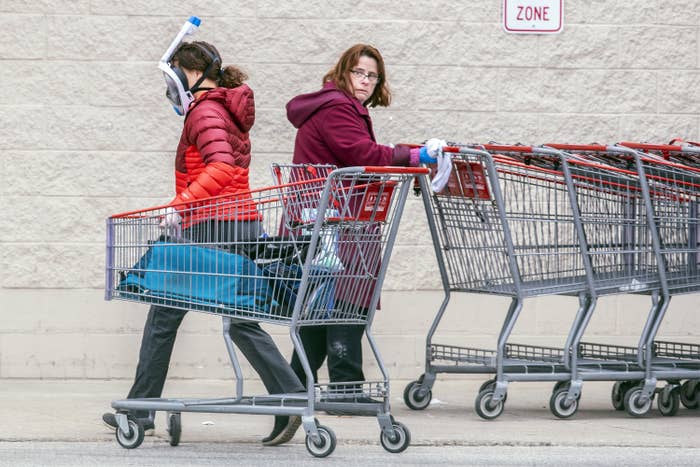
Michael Bryant / AP
A Costco employee, right, looks towards a shopper wearing a mask and snorkel to go shopping in King of Prussia, Pennsylvania
A growing number of public health experts are arguing that people should wear masks while in public to help prevent spreading the coronavirus, as new data shows people without visible symptoms are likely spreading COVID-19 more than previously believed.
Just this week, the Trump administration announced the CDC was considering the idea. "The idea of getting a much more broad communitywide use of masks outside of the health care setting is under very active discussion,” Anthony Fauci, director of the National Institute of Allergy and Infectious Diseases and a member of the president’s coronavirus task force, told ABC News.
As Americans wait for more guidance from the federal government, we’ll tackle three questions currently at the heart of the fast-changing mask debate: Who can spread the virus? Can the virus be airborne? What’s the difference between the types of masks? But first, some overall context:
The debate over mask use — happening inside the Trump administration, academia, and hospitals whose workers are caring for COVID-19 patients — is getting increasingly heated. Public health experts have been pushing back against the narrow federal guidelines stating that face masks should only be worn by health care workers, people caring for the ill, or those who are actively displaying symptoms.
What it means for the general public is still confusing and ethically murky. There is a lethal shortage of medical masks — both the rigid, snug-fitting N95 respirators and the looser-fitting surgical masks — for health care workers, and there will be even fewer if the general public buys them en masse. And as people turn to making homemade masks from craft kits or old T-shirts, it’s still unclear how much these even help prevent the spread of the disease or prevent the wearer from contracting it.
Part of the confusion stems from misleading messaging in the early days of the US outbreak. In late February, US Surgeon General Jerome Adams forcefully said that the public should not wear masks. His widely shared tweet made the contradictory argument that masks would not protect the public against the virus — but that, at the same time, health care workers needed them for protection. He also didn’t specify what counted as a mask. An N95? A surgical mask? A fabric mask?
U.S. Surgeon General@Surgeon_General
Seriously people- STOP BUYING MASKS! They are NOT effective in preventing general public from catching #Coronavirus, but if healthcare providers can’t get them to care for sick patients, it puts them and our communities at risk! https://t.co/UxZRwxxKL912:08 PM - 29 Feb 2020
Similarly, the CDC’s guidance has been unchanged from the beginning: Healthy people do not need masks. “You do not need to wear a facemask unless you are caring for someone who is sick (and they are not able to wear a facemask). Facemasks may be in short supply and they should be saved for caregivers,” the agency’s website says.
Even the World Health Organization still does not endorse widespread mask use.
Meanwhile, countries where widespread mask use predated the pandemic — including China, Japan, and South Korea — are embracing masks more than ever. George Gao, director-general of the Chinese Center for Disease Control and Prevention, told Science the biggest mistake countries like the US were making in response to the outbreak “is that people aren’t wearing masks.”
PM SHINZO ABE JAPANESE PARLIAMENT
In recent weeks, some US hospitals have changed their guidelines, requiring all of their staff to wear masks, instead of just those interacting with COVID-19 patients. And US public health experts are pushing back, including Scott Gottlieb, the former commissioner of the US Food and Drug Administration, who cowrote a report recommending “everyone, including people without symptoms, should be encouraged to wear nonmedical fabric face masks while in public.”
The subsequent mask debate inside the federal government, first reported by the Washington Post, is a stark departure from previous federal recommendations.
When asked on Wednesday about whether the public should wear masks, President Donald Trump said: “We don’t want to take them away from our medical professionals, but I don’t see it hurting.” And Los Angeles Mayor Eric Garcetti this week recommended everyone in the city wear a nonmedical mask, such as a homemade mask or bandana.
Public health officials consulted by BuzzFeed News declined to criticize the CDC’s decision-making on masks, saying it was appropriate based on what we knew about the coronavirus at the time. But now that our understanding of the spread has shifted, they said, so too should our guidance on masks.
“The first reason to wear a mask is so we all protect each other,” said Roger Shapiro, a Boston doctor and an associate professor of immunology and infectious diseases at Harvard, the best rationale for wearing a mask “is so you don’t infect someone else.”
There may also “be a small benefit” to a noninfected mask wearer, he added, “since we don’t know everything about how this disease transmits.”
All sides of the debate still agree that masks will only be effective in helping to slow the spread of the coronavirus if used in addition to regular handwashing and social distancing.
Here’s what we know so far:
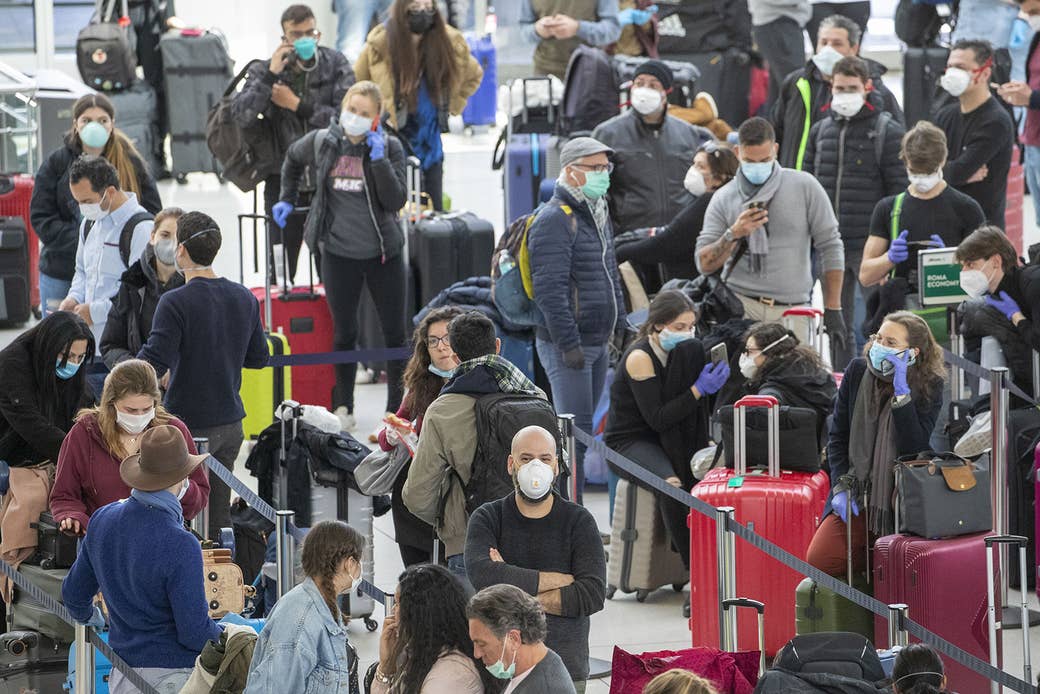
Mary Altaffer / AP
Passengers wear face masks as they wait in line to check in for their flights on March 24 at JFK airport in New York.
People with no symptoms can spread the virus — so more masks could help stop the spread.
According to the early information coming out of China, where the outbreak began, the virus was predominantly being spread by visibly sick people who were coughing and sneezing into the air close to others and on surfaces.
If those sick people self-isolate, or at least stay 6 feet away from others, and wear a mask to cut down on the germs they are spewing, they would cut down on their chances of infecting others.
Since then, a growing body of data suggests that some percentage of people who test positive for the virus never display any symptoms, but are likely to still be capable of spreading the disease (though such transmission hasn’t been confirmed). In the cases of people who do develop symptoms, they can be contagious for a few days before that happens, other research shows. This means people who the CDC currently says should not wear masks could be spreading the disease without knowing it.
It’s for this same reason that some hospitals have started mandating widespread mask use among health care workers.
The new policy was put in place at Boston’s Massachusetts General Hospital and Partners HealthCare hospitals in recent weeks “based on our recognition that there is widespread community transmission of COVID-19, as well as our recognition that there is significant asymptomatic spread — in other words, COVID-19 can be spread by people who don’t feel ill at all,” Paul Biddinger, chief of emergency preparedness for both MGH and Partners, told the Globe.
Shapiro, whose hospital also changed its guidelines, said that new policy shifted his thinking on masks more generally. “If I’m going to do it in the hospital, it raises that question of why not do it in other settings,” Shapiro said. “But I can tell you I haven’t changed my personal practice.”
There are also questions about whether the virus can be airborne.
When an infected person is coughing, sneezing, or likely even talking, they are spewing both small particles and large droplets into the air. This is how the virus is most likely transmitted, public health officials say, which is why they recommend staying 6 feet away from others to be outside the possible splash zone, as well as washing your hands and avoiding touching your face in case you touched an infected surface.
But new research suggests the virus can sometimes spread through the air, where small particles have stayed aloft for up to 3 hours in a lab setting. That’s much longer than originally thought. But it’s important to stress that experts don’t actually know whether the virus is really spreading this way in the real world, unlike well-known airborne diseases such as measles.
There’s at least one case where local officials are considering the possibility of airborne spread, at a choir recital in Washington state. No one was visibly ill at the event, but afterward at least 45 choir members likely got COVID-19, and at least one died.
But most masks wouldn’t protect against airborne exposure.
Not all masks offer equal protection.
For the purposes of the coronavirus outbreak, there are three main types of masks: respirators, surgical masks, and fabric, or homemade, masks.
N95s
Rigorously lab-tested and government-approved, N95 respirators are designed to protect someone from 95% of the particles in the air. They are so protective both because the mask material is relatively non-porous, designed to keep out large droplets and small particle aerosols, and they are securely fitted to a wearer’s face to ensure stray particles can’t slip in through the sides.
In the coronavirus outbreak, N95s are only recommended for health care workers performing procedures that put them most at risk of virus exposure, such as testing for the virus by swabbing a patient’s nose or mouth. They are most effective when used only once, but are currently being reused by doctors and nurses due to mass shortages.
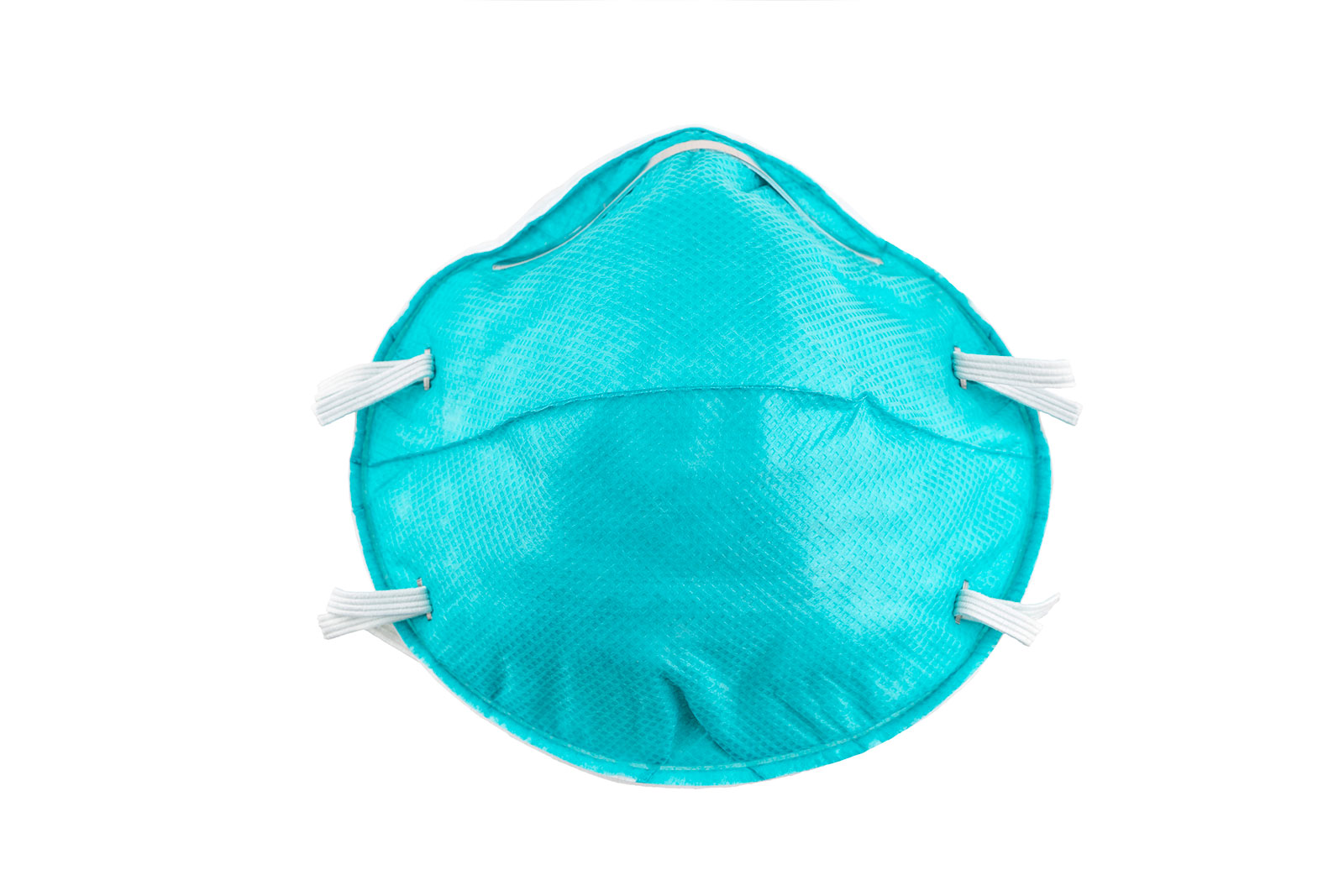
Getty Images
Surgical masks
Surgical masks are approved by the FDA, and they help protect the wearer against large droplets. Since they are more porous than N95 respirators and loose fitting, they do not protect against small particles in the air. They are disposable and most effective in single-patient interactions.
In the coronavirus outbreak, surgical masks are recommended for health care workers, caregivers, and people who are sick. They are also being reused due to supply shortages.
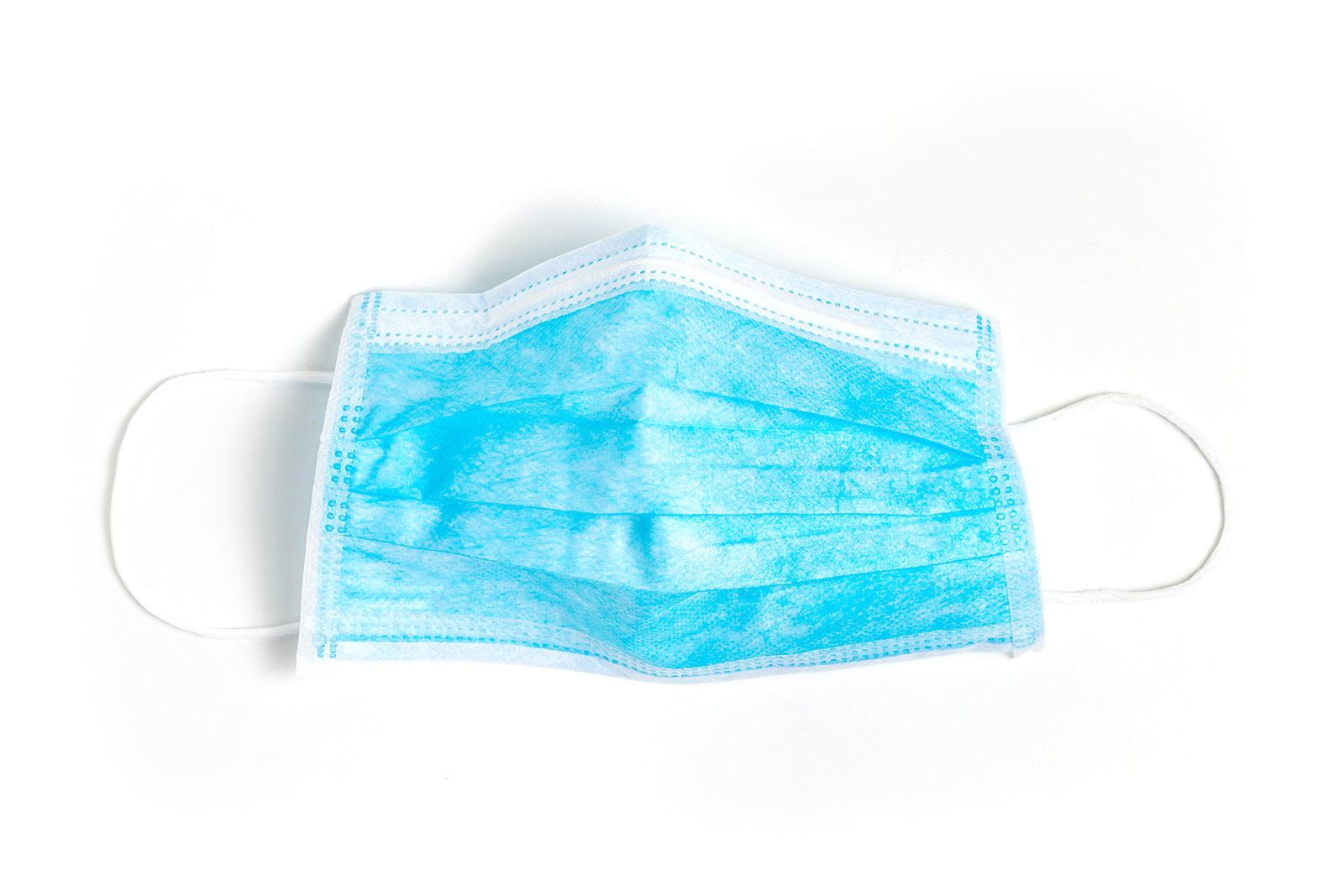
Alamy
Fabric or home-made masks
They can range widely in material and quality. While they may offer some protection against large droplets, it’s unknown how effective they are at doing so, and they do not protect against small particles in the air. According to one small study, they were three times less effective than surgical masks.
In the coronavirus outbreak, the CDC is only recommending people wear such masks when caring for COVID-19 patients “as a last resort.” But this may change, and some public officials are already recommending the general public wear such masks.
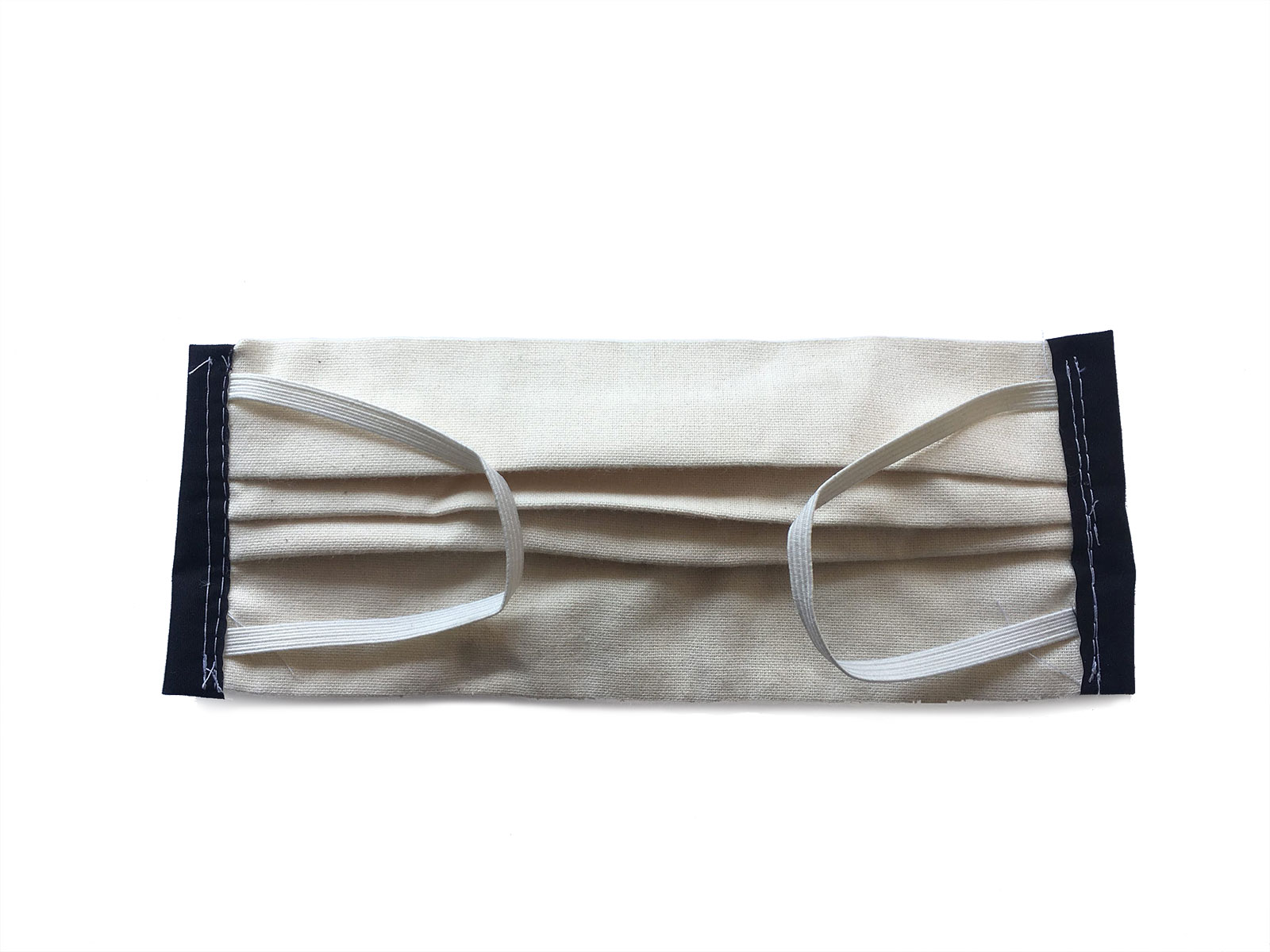
Ben King / BuzzFeed News; BQE Bags
N95 respirators are considered the gold standard for those on the frontlines. When worn properly — securely fitted to a wearer’s face — they offer protection from about 95% of small particles (0.3 microns in size) and large droplets. Individual coronavirus particles are smaller than this. But when they are coughed or sneezed up, they likely travel in small clumps of spit and mucus.
The WHO and the CDC only recommend N95s for health care workers at the greatest risk of virus exposure, such as those who test patients for COVID-19 by swabbing their noses or mouths or those who connect patients to respirators. In an ideal setting, N95s are only worn once and then tossed out. But due to supply shortages, health care workers are having to repeatedly wear the respirators, raising questions about whether the masks are getting contaminated from repeated exposures and removals. No one is recommending the public wear N95 respirators.
Surgical masks are the next step down, offering protection against large droplets. This is the type of mask CDC currently recommends for most health care workers, caregivers, and people who are sick. In recent weeks, a wave of hospitals in Boston, San Francisco, and Providence, and other US cities, have started requiring all of their health care workers wear these masks, six doctors and nurses told BuzzFeed News.
The current shortage of surgical masks for health care workers is shaping the government’s thinking on whether to start recommending them to the public.
Consequently, the discussions over changing the CDC’s mask guidance are about whether most people should start wearing homemade fabric masks, which may offer some protection against large droplets but don’t protect against small particles in the air. Not considered official “personal protective equipment” by the CDC, the agency only recommends them for health care workers “as a last resort.” Their effectiveness against droplets is unknown due to minimal study and the wide range in fabric materials that can be used.
According to a 2013 study in the journal Disaster Medicine and Public Health Preparedness, fabric masks that fit snugly on the face provided three times less protection than surgical masks. “We found they are not as good as surgical masks,” Anna Davies, the lead study author, told BuzzFeed News.
Davies and her colleagues found a surgical mask had about a 90% filtration efficiency for very small particles (around 2 microns). The next best materials found at home at blocking particles were vacuum cleaner bags (about 86% filtration efficiency) and tea towels (about 72% filtration efficiency), but they would be so difficult to breathe out of that they wouldn’t be suitable for a mask. Meanwhile, a cotton mix material had about 70% filtration efficiency compared to roughly 57% for a pillowcase, about 62% for linen, about 54% for silk, nearly 51% for a 100% cotton T-shirt, and nearly 49% for a scarf.
“An improvised face mask should be viewed as the last possible alternative if a supply of commercial face masks is not available,” the study authors wrote, and should be paired with other protective measures.
Davies noted this was a very small study, not a clinical trial, and that much more research was needed on the effectiveness of homemade masks in a pandemic environment.
Some of the health experts most resistant to universal mask-wearing largely cite concerns that people would not wear masks properly or adhere to other safety precautions less as a result. If someone is constantly fidgeting with their mask, or is emboldened to get closer to people than 6 feet or leave the house more than they might otherwise, the potential benefits of a mask would likely be negated.
“I suspect probably if everyone wore masks, and alongside all social distancing, you’d probably see a reduction in transmission,” Davies said. “The masks don’t give you a normal life back, unfortunately.”
Many questions remain about how to best use fabric masks: How do you decontaminate them? Can they be reused? How long should you wear a homemade mask for?
But public health officials are increasingly coming on board to the idea of more people covering their faces, or at least supporting people who want to.
“No one should be yelled at because they decide to wear a mask,” said Georges Benjamin, executive director of the American Public Health Association. “They are not crazy. They are trying to protect themselves. And may it reduce their risk a little bit? Maybe.” ●

Zahra Hirji is a science reporter for BuzzFeed News and is based in Washington, DC



No comments:
Post a Comment